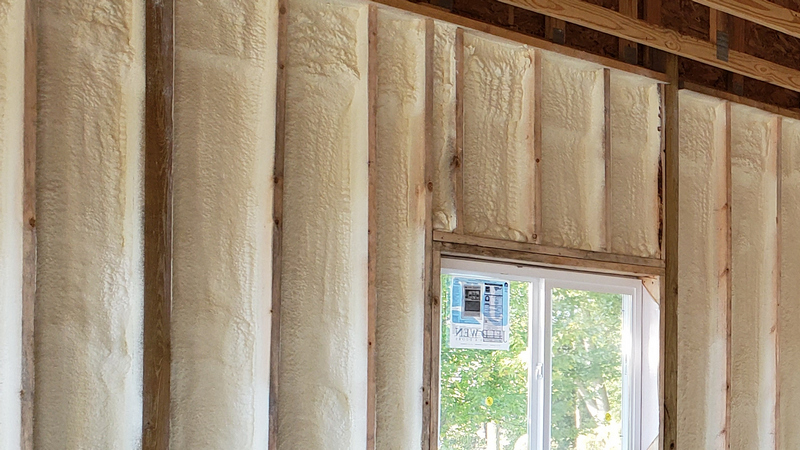
Understanding the insulation R-Value:
How to Choose the Best Insulation for Your Saskatchewan Home
What is R-Value?
R-value represents the ability of insulation materials to resist heat flow. The higher the R-value, the better the insulation’s effectiveness at preventing heat transfer. Insulation with a higher R-value helps keep your home warmer in winter and cooler in summer by reducing energy loss, ultimately leading to lower heating and cooling costs.
The Origin of R-Value
The term “R-value” originated in the United States as part of the building code systems developed in the mid-20th century. The “R” stands for “resistance,” and the value indicates a material’s ability to resist the transfer of heat. In the context of home insulation, it refers to how well the insulation material can prevent heat from moving in and out of a building. The higher the R-value, the more resistant the material is to heat flow, making it a critical measure in the effectiveness of insulation.
R-values are determined through standardized tests and vary depending on the material’s composition and thickness. For example, a thicker material or one with denser properties will generally have a higher R-value, offering better insulation performance. In Saskatchewan, the goal is to use insulation that helps homes maintain a comfortable temperature despite the region’s extreme weather conditions.
When building or renovating a home in Saskatchewan, one of the most important considerations is how to properly insulate the space. Insulation is essential for maintaining comfort throughout the year, especially with the province’s cold winters and hot summers. The key to selecting the right insulation lies in understanding the R-value, a measure of thermal resistance.
In Saskatchewan, building codes specify minimum insulation requirements to enhance energy efficiency and comfort in homes. Below is a summary of the recommended R-values for various components of a home, along with a table detailing the required thicknesses of different insulation materials to achieve these R-values.
Saskatchewan Building Codes and Insulation Requirements
In Saskatchewan, building codes set minimum insulation standards to ensure homes are energy-efficient and comfortable. The Saskatchewan Building Code (SBC) provides guidelines for the appropriate R-values required for various parts of a home, such as walls, attics, and foundations. These codes are based on factors like climate zone, energy efficiency goals, and overall building performance.
For example, the SBC recommends R-values of R-22 for exterior walls and R-52 for attics to help maintain energy efficiency in the region’s cold winters. For basements, an R-value of at least R-20 is suggested to improve energy efficiency and prevent moisture-related issues. These standards are designed to meet the needs of homeowners by balancing performance, cost, and energy conservation. Adhering to these codes ensures compliance with local regulations while also contributing to the longevity and comfort of your home.
Recommended R-Values for Saskatchewan Homes:
To determine the best insulation for your home, it’s essential to consider the recommended R-values for different parts of the house. For Saskatchewan, the following guidelines will help ensure optimal energy efficiency:
- Exterior Walls: Minimum R-22. This helps keep your home insulated from the extreme temperatures outside.
- Attic Spaces: Minimum R-52. An R-value of R-52 prevents heat loss through the roof, especially during winter months.
- Basement Walls: Insulating basement walls to at least R-20 will help maintain a consistent temperature in your home, prevent moisture buildup, and avoid the risk of mold growth.
Types of Insulation Materials
There are several types of insulation materials to choose from, each with different R-values per inch of thickness. Here’s a quick overview of the most common options:
- Fiberglass Insulation: Typically offers an R-value of about 3.5 per inch. It’s cost-effective and commonly used in walls, attics, and basements.
- Open-Cell Spray Foam: Provides an R-value of around 3.5 per inch. It’s lightweight, expands to fill gaps, and provides excellent air sealing.
- Closed-Cell Spray Foam: This offers a higher R-value of approximately 6.5 per inch. It’s ideal for areas prone to moisture, such as basements, and offers superior insulation and air sealing.
Required Thicknesses to Achieve Minimum R-Values:
Comparing the r value of spray foam vs fiberglass –
| Insulation Type | Exterior Walls (R-22) | Attic Spaces (R-52) | Basement Walls (R-20) |
| Fiberglass Insulation | 6.3 inches | 14.9 inches | 5.7 inches |
| Open-Cell Spray Foam | 6.3 inches | 14.9 inches | 5.7 inches |
| Closed-Cell Spray Foam | 3.4 inches | 8.0 inches | 3.1 inches |
Notes:
- The R-values per inch for insulation materials are approximate and can vary based on specific product formulations.
- Closed-cell spray foam offers higher R-values per inch compared to open-cell spray foam and fiber-glass insulation.
- Achieving the required R-values may necessitate additional considerations, such as air barriers and vapour retarders, depending on the insulation type and local building codes.
The Energy Efficiency Handbook PDF provided by the City of Saskatoon is a great source of information.
Saskatoon
It’s essential to consult local building codes and a professional contractor to ensure compliance with all requirements and to select the most appropriate insulation materials for your specific project.
Related Posts:
✅ Spray Foam Insulation for Shops, Quonsets, and Pole Barns
✅ Spray Foam Insulation and Mice
If you’re looking for a reliable spray foam contractor near you, and you’re located in Swift Current or surrounding areas, we’re here to help. We’ve done work throughout Saskatchewan, and also in Alberta and Manitoba. ProFoam Insulators from Swift Current are insulation experts, we’d love to answer your insulation questions. Give us a call!
In Swift Current:
Telephone: 306-773-3606
Cellular: 306-537-9529
The information on this page and this website is for informational purposes only, and is not a substitute for Federal, Provincial or Municipal regulations, bylaws, codes, or licences. If any information on this website is inconsistent with any applicable code/regulation, the appropriate code/regulation from the applicable regulatory governing body takes precedent.

